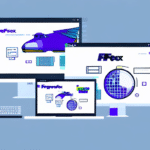How to Create an Online Store That Works Across All Devices
As online shopping continues to grow in importance, optimizing your website for all devices and screen sizes is crucial. Whether a customer visits your website on their desktop, tablet, or smartphone, their experience needs to be seamless and intuitive to ensure satisfaction. In this article, we discuss the importance of responsive design for e-commerce sites and provide practical tips for creating an online store that works across all devices.
Why Responsive Design is Vital for Your Online Store
Responsive design is an approach to creating websites that adapt to different screen sizes. It ensures that your website looks and functions seamlessly across all devices, from large desktop monitors to small smartphone screens. Without responsive design, your website may appear unprofessional and difficult to use on certain devices, leading to lost sales and lower rankings in search engine results pages.
Moreover, responsive design can improve the overall user experience of your online store. By optimizing your website for different devices, you provide a consistent and user-friendly experience for your customers, regardless of how they access your site. This can lead to increased customer satisfaction and loyalty, as well as higher conversion rates.
Another benefit of responsive design is that it can save you time and money in the long run. Instead of creating separate websites or apps for different devices, responsive design allows you to maintain a single website that adapts to any screen size. This means you only need to update and maintain one website, rather than multiple versions, which can be a significant cost and time saver for your business.
Understanding Mobile-First Design for E-commerce Websites
Mobile-first design prioritizes designing for mobile devices before desktops. This approach is essential for e-commerce websites as mobile devices continue to dominate online shopping. When designing for mobile, it's important to keep in mind that users interact with their devices differently than with desktops. Ensure the design is simple, clear, and navigation is intuitive.
Another important aspect of mobile-first design for e-commerce websites is the need for fast loading times. Mobile users expect websites to load quickly, and slow loading times can lead to high bounce rates and lost sales. To ensure fast loading times, optimize images and reduce the number of HTTP requests. Additionally, consider implementing a content delivery network (CDN) to improve website speed and performance.
The Importance of User Experience in Cross-Device E-commerce
User experience (UX) is essential for the success of any online store. In cross-device e-commerce, UX determines how users interact with your website on different devices. Your website needs to be easy to use and navigate, with streamlined payment processes and clear calls-to-action to improve customer satisfaction and engagement.
One important aspect of UX in cross-device e-commerce is responsive design. Your website should be optimized for different screen sizes and resolutions, ensuring that users have a seamless experience whether they are browsing on a desktop computer, tablet, or smartphone. This can be achieved through the use of flexible layouts, scalable images, and adaptive navigation menus.
Another key factor in UX for cross-device e-commerce is personalization. By tailoring the shopping experience to each individual user, you can increase engagement and drive sales. This can be done through targeted product recommendations, personalized promotions, and customized content based on user preferences and behavior.
Choosing the Right E-commerce Platform for Mobile Optimization
Many e-commerce platforms offer templates and design options optimized for mobile devices. Choose a platform that makes it easy to enable responsive design and mobile optimization, such as Shopify or WooCommerce. These platforms also offer plugins, such as mobile-specific navigation and product galleries, which can enhance the mobile shopping experience for your customers.
Another important factor to consider when choosing an e-commerce platform for mobile optimization is the speed of the website. Mobile users expect fast loading times and a smooth browsing experience. Look for a platform that offers fast page load times and has a good reputation for mobile performance.
It's also important to consider the payment options available on the platform. Mobile users may prefer to use mobile payment options such as Apple Pay or Google Wallet. Make sure the platform you choose supports these payment options, as well as traditional payment methods like credit cards and PayPal.
How to Optimize Your Online Store for Different Screen Sizes
The key to optimizing your online store for different screen sizes is to create a flexible layout. Use percentage values for width and height instead of fixed pixel values to ensure that your website is scalable and adaptable to different devices. It’s also important to test your website on different devices to identify any layout issues, such as broken images, overlapping text, or slow-loading pages.
Another important factor when optimizing your online store for different screen sizes is the use of responsive design. Responsive design allows your website to automatically adjust its layout and content based on the screen size of the device being used. This means that your website will look great and be easy to navigate on any device, whether it's a desktop computer, tablet, or smartphone.
In addition to using responsive design, it’s also important to optimize your website’s images and videos for different screen sizes. This can be done by using image compression tools to reduce file sizes without sacrificing quality, and by using HTML5 video players that can automatically adjust the video quality based on the user’s device and internet connection speed.
Best Practices for Responsive Navigation and Menus on Your E-commerce Site
Navigation and menus are essential for the user experience on any website, especially for e-commerce sites. Your navigation should be easy to use, with clear categories and subcategories that make it easy for customers to find what they’re looking for. Use mobile-responsive navigation tools such as hamburger menus or dropdowns to optimize the user experience across all devices.
Another important aspect of responsive navigation and menus is ensuring they are accessible to all users, including those with disabilities. This means using clear and descriptive labels for each menu item and providing alternative text for any images used in the navigation. Additionally, consider implementing keyboard shortcuts or other accessibility features to make it easier for users to navigate your site.
Finally, it’s important to regularly review and update your navigation and menus to ensure they still meet the needs of your customers. Analyze user behavior and feedback to identify any pain points or areas for improvement, and make adjustments as needed. By prioritizing responsive and user-friendly navigation, you can improve the overall experience for your customers and drive more sales on your e-commerce site.
How to Make Your Product Images Look Great on Any Device
Product images are one of the most important elements of an online store, as they help customers visualize the item and make informed purchasing decisions. To ensure your product images look great on any device, use high-quality, high-resolution images that are optimized for web use. Also, make sure that the images are scaled correctly so they do not appear distorted or pixelated on smaller screens.
In addition to using high-quality images and scaling them correctly, it is also important to consider the file format of your product images. JPEG is the most commonly used file format for product images, as it provides a good balance between image quality and file size. However, if your product images have transparent backgrounds or require a higher level of detail, consider using PNG or SVG file formats instead. These file formats may result in larger file sizes, but they ensure that your product images look great on any device.
The Role of Website Speed in Cross-Device E-commerce Success
The speed of your website plays a crucial role in customer satisfaction and retention. Slow-loading websites can lead to a high bounce rate, lower conversion rates, and decreased sales. Optimize your website’s loading speed by minimizing HTTP requests, compressing images and files, and optimizing your website’s code. Testing your site’s loading speed on different devices regularly is also important to identify any issues.
Top Tools and Plugins for Testing Your Site’s Mobile Responsiveness
There are numerous tools and plugins available to test your site’s mobile responsiveness, including Google’s Mobile-Friendly Test and BrowserStack. These tools allow you to test your website on multiple devices and browsers to identify any layout, navigation, or performance issues that need to be addressed. Keeping your website up-to-date with new mobile devices and browsers is a crucial factor for better user engagement and higher conversion rates.
Implementing Strong SEO Strategies to Boost Your Mobile Search Rankings
Search engine optimization is critical for ensuring that your online store is visible to customers and ranks high in search engine results pages (SERPs). Strong SEO strategies such as optimizing your website’s meta tags, adding schema markup, providing high-quality content, and using responsive design can all improve your mobile search ranking on Google, Bing, and Yahoo.
Measuring the Success of Your Cross-Device E-commerce Site with Analytics
Using analytics tools, such as Google Analytics, can help you track the success of your cross-device e-commerce site. You can monitor data such as website traffic, bounce rate, conversion rate, and sales to determine what changes are positively affecting your online store. This data can help you optimize your website for better performance and higher conversion rates.
Staying Ahead of the Curve with Future-Proof Responsive Design Techniques
Responsive design is constantly evolving, with new techniques and best practices emerging all the time. It’s essential to stay on top of these trends to ensure your online store remains competitive and up-to-date. Keep up with industry news, attend conferences and webinars, and follow industry leaders to ensure you are always aware of the latest emerging trends and techniques.
Common Mistakes to Avoid When Creating a Cross-Device Online Store
Several common mistakes should be avoided when creating a cross-device online store, such as:
- Focusing solely on desktop design
- Using fixed-width layouts
- Ignoring website loading speed
- Failing to test on different devices regularly
Avoid these mistakes to ensure your website is accessible to all customers and ranks highly in search engine results pages.
Best Examples of Brands That Have Nailed Responsive Design for Their Online Stores
Several brands have excelled in responsive design for their online stores, such as Amazon, ASOS, and Etsy. These brands provide a seamless and intuitive shopping experience across all devices, which makes them stand out from their competitors. Look to these brands for inspiration, and use their best practices to optimize your own online store for different devices.
Creating an online store that works across all devices is critical for e-commerce success. By prioritizing responsive design and mobile-first design, optimizing for different screen sizes, and implementing strong SEO strategies, you can create an online store that stands out from the competition and meets customer needs and expectations. Use the tips outlined in this article to optimize your website for cross-device e-commerce success.








